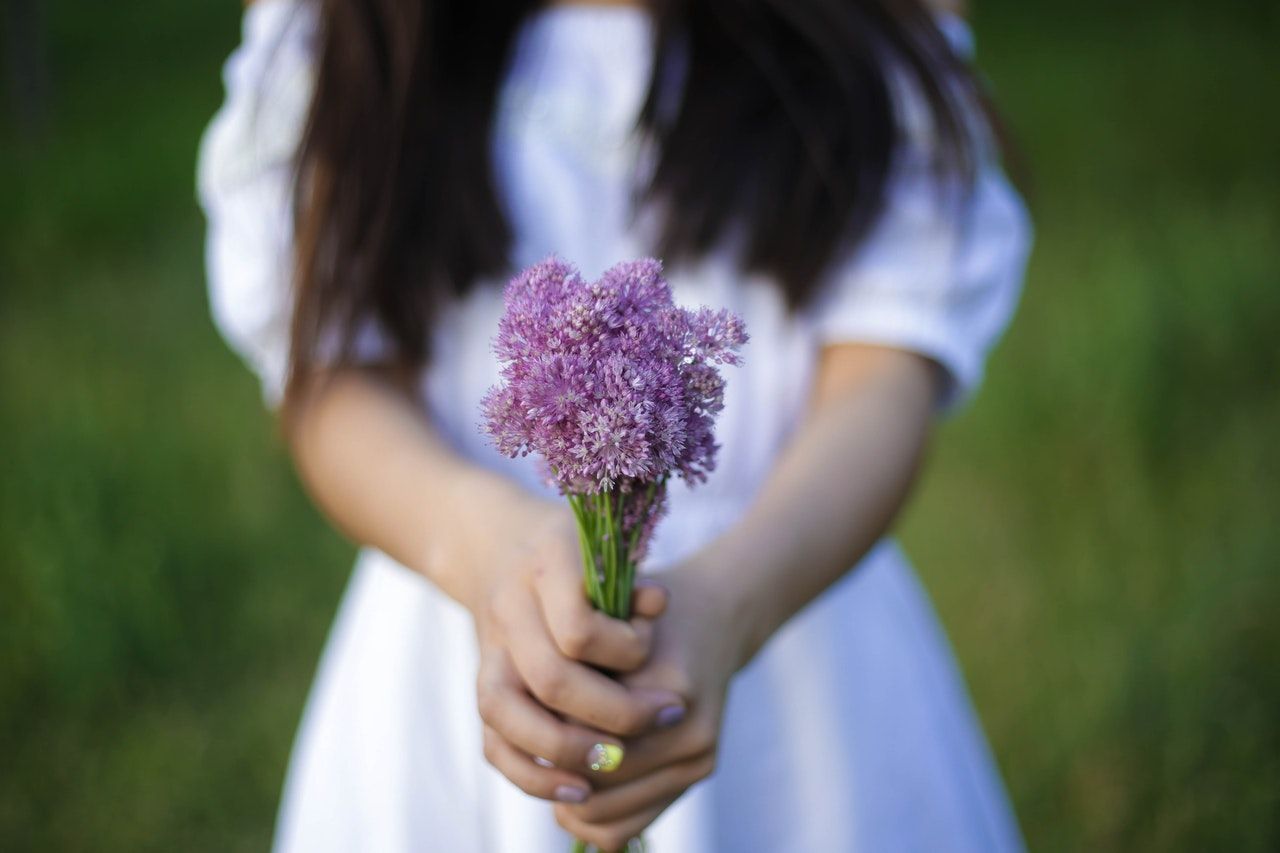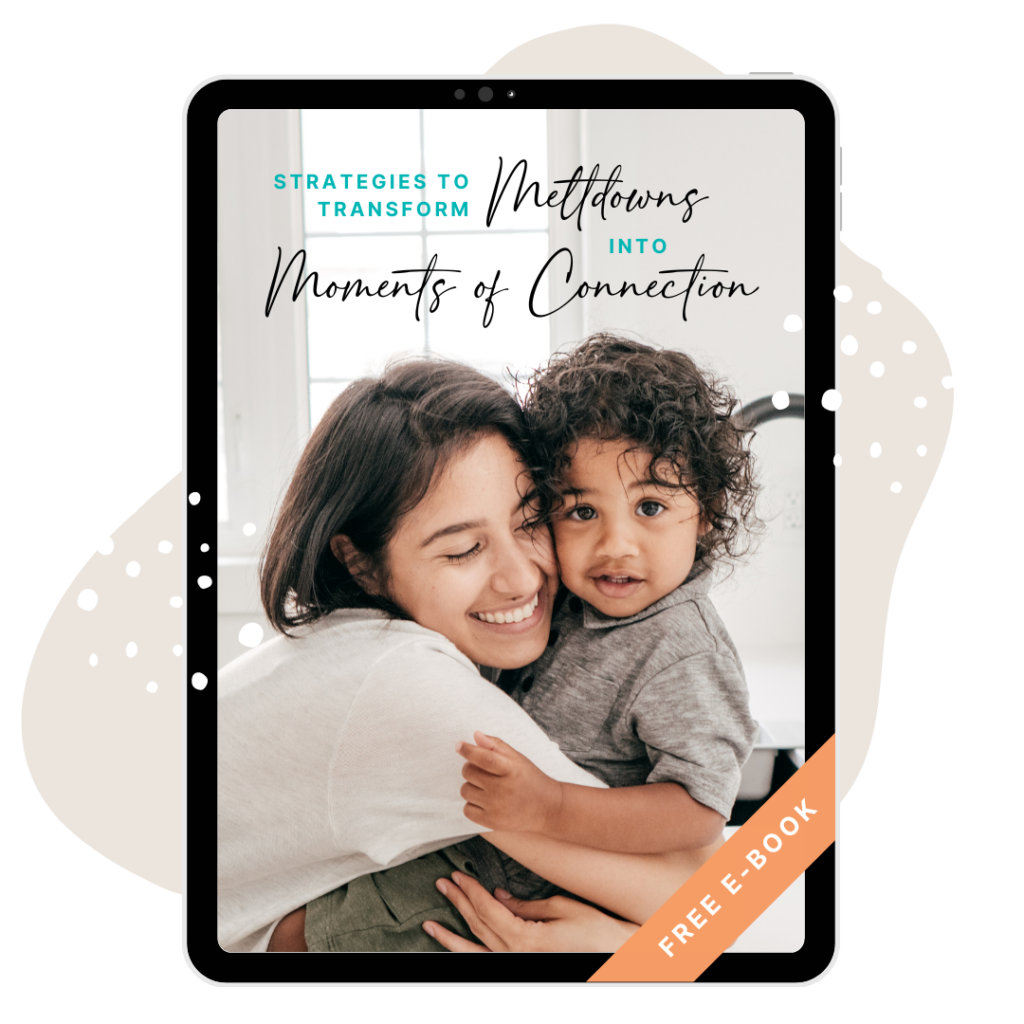The Child Who is Not Peaceful

In Montessori, we believe in each child’s innate goodness, their potential for peace and grace. How do we approach the small child who is anything but – the child who hits and hurts others?
This is the sevents in our series on communication, Speaking the Child’s Language.
Anyone who’s ever had dealings with young children can attest to their potential for love: the kindness and gentleness they exhibit with sometimes boundless generosity. Yet the very same small child who was ever so lovingly hugging a friend a minute ago can also shove and scratch; tear hair; hit them with a toy.
Physical aggression usually becomes a big topic in early toddlerhood and continues throughout the preschool age. On one hand, it is the very definition of what Dr. Montessori decried as “antisocial behaviour”; it is the opposite of what we believe to be the normal for the child. On the other hand, physical aggression is a common feature of human development, one that we must both acknowledge and expect in order to deal with it effectively.
If we believe that the natural condition of the child is to be loving and peaceful, then where does aggression arise from?

Discover practical, easy-to-implement strategies to gently navigate your child’s emotional outbursts, while maintaining your own sense of calm.
- Lack of understanding
Very young children – infants and young toddlers – are active explorers, and often quite literally throw themselves head-first into activity. Between a lack of coordination and an immature understanding of one’s effect on others, your average toddler will have some regrettable incidents, especially if his natural temperament tends to exuberant or extroverted: knocking another child down, being destructive, grabbing objects or body parts with undue force, hitting or biting (particularly with children who still tends toward oral exploration). - Inability to communicate or solve frustration
This tends to be the dominant factor around two or three years of age, when the child now can understand (at least in a rudimentary way) that what she does is wrong and hurts others, yet she doesn’t have a better way to express or address her needs. She does not necessarily possess an actual desire to hurt the other person and is more likely motivated by a need to defend herself from a situation or frustration that she finds unbearable. We can often see that she is upset, agitated, fearful or angry when this happens. - Lack of regulation or impulse control, underdeveloped problem-solving strategies
A scenario that is closely connected to the previous one yet a step further, is a child who does in theory possess the tools to communicate act appropriately yet still lashes out aggressively in response to frustration, usually in the preschool years. This is the child who gets angry at a friend and hits him in retaliation or as punishment for wrongdoing.
Addressing Aggressive Behaviour in a Child
- Preventing Conflict
Naturally, the most basic immediate question when a child acts out repeatedly is to determine whether their physical and emotional needs are being met. An adult who is hungry, overtired or overtaxed and overstimulated will often lack the resources to self-regulate and use appropriate coping mechanism in response to further frustration; this goes double for a child.
Of course, addressing physical distress is only the first step. Next up should be the child’s mental and emotional needs: safety and security; parental or caregiver love and attention; independence, freedom and meaningful activity. As Dr. Montessori wrote when addressing disorderly behaviour in Absorbent Mind: “…But all these disturbances came from a single cause, which was insufficient nourishment for the life of the mind.” - Responding to an incident
Ounce of prevention may be a pound of cure, nonetheless the cure should definitely be administered as well.
As a rule of thumb, in case of aggressive incidents intervening adults should first look to ensure physical safety of all involved, next provide comfort and aid to the child who was hurt, and then address and aid the child who did the hurting. Even in the case of clear-cut, one sided incidents, the aggressor has great need of our help. As Dr. Montessori might say, the greatest danger is to them – danger to their development and spirit.
Depending on the child’s age and level of development, adults should:- Explain or reiterate that what the child did was wrong (For example, saying “You hit her. She is upset and hurting. We touch each other gently,” to a toddler, or “It is absolutely unacceptable to kick others” to a preschooler)
- Help them identify and express what lead to the incident. Be clear and matter of fact. You can both ask questions and offer your own insights, based on your audience; but avoid long-winded, muddled debates and stories or arguments over “whose fault” something was. (“I see she had taken your truck. Were you angry with her?”)
- Offer alternate actions and behaviour. What was it that the child should have, could have done? You can tell a young child very simply, or discuss it with an older one and try to help guide them to an appropriate answer. Either way, it is as always vastly more effective to take a positive approach over the negative one – what should happen over what shouldn’t.
- Provide consequences. Again, these can be imposed by the adult, or brainstormed and agreed upon with a more mature child, but they should always be natural (logical), direct and sensible, with their scope appropriate to the child’s developmental level. For impulsive, opportunistic incidents, it is often distance: a child who threw sand at her brother will not play in the sandbox for the rest of the day; if she hit another with a toy car, the toy car is put away for a time. Especially useful are consequences that involve the children making amends: doing something kind or helpful for the one who was hurt. A little child can bring a tissue, older one, offer a coveted toy or doing a favour. Please avoid asking a child to just “say sorry” (which can be quite mechanical and meaningless) or force hugs, handshakes or other modes of physical closeness.
- Focus on staying calm, staying consistent, and empowering your child. Consistency and predictability, delivered with calm and confidence, are the best ways to help your child learn. This does not mean an emotion-less mask, but rather (if you’re facing a repeated issue), determining the appropriate course of action (making a plan with your child’s other parent or caregivers), and making sure that your child is receiving the same message in every incident. It is appropriate and desirable to let your child know that you are saddened, frustrated or disappointed by something you’ve done. However, if you find yourself often losing track of your ultimate goal – that it is to help your child learn and grown so that they no longer have this issue – and acting in anger, it is time to take a break and likely, seek help.
- The meaning of acceptance and the question of punishment
We’ve said it before and we will say it again (and again, and again…): please do not use punishment. It is counterproductive and harmful. It is completely incompatible with the Montessori educational and parenting philosophy. It is, in fact, everything you don’t want your child to see and emulate if they’re struggling with violent behaviour. And I don’t mean only physical punishment, which was roundly and decidedly rejected by Dr. Montessori a century ago and truly ought not to be even a part of the conversation anymore. If we as adults exercise our power over the child in order to retaliate against their wrongful behaviour, how does that make us right? How is that different from a child retaliating against another by hitting him, exercising the only power she has in the moment?
Consequences are different: even as we demonstrate to the child that we reject certain behaviours, we never reject the child; we are helping him avoid wrongdoing, helping him learn, because we love and accept him. A child who is violent and aggressive still needs love and acceptance – in fact, this child often needs it more now than ever.
When to seek outside help?
Physical aggression falls within the normal developmental patterns of the first developmental plane only in a limited scope. As in adults, excessive aggression or violent behaviour is a severe issue, and besides its actual impact, it can also be a cry from help, of a child who is suffering, or a warning sign for disorders that require extensive professional help.
It can be a difficult and painful moment for a parent to admit that their child might need such help – however, not seeking it out when necessary is in itself a form of neglect and violence. Red flags that should never be ignored include:
- Lack of remorse and empathy for violence or wrongdoing (past toddler years – young toddlers have a limited development of empathy and may not show their remorse outwardly)
- Repeated, excessive violence and outbursts without any discernable triggers
- Developmentally inappropriate and regressive behaviours, such as tantrums in an Elementary aged child, in the absence of a potential trigger (such as a major disruption to the child’s life, for example birth of a sibling or moving house)
- Self-directed harm and self-inflicted injuries
- Premeditated or planned violence
- Repeated, targeted aggression or bullying
- Sexualized behaviour, cruelty to animals, fire starting
When Your Child Hurts Others
The above writing focused almost exclusively on how to help the child. I would be remiss not to mention that the child might not be the only person in need of assistance.
Having one’s child hurt others can be a profoundly disturbing and troubling experience. Some parents deal with it by dismissing it as “normal”, “nothing to make a fuss about”, or my own absolute least favourite, “boys will be boys”; others lash against the child with punishments and rejection; yet others direct blame and self-loathing at themselves.
Neither of those approaches is very productive. The same guidelines of firmness, clarity and kindness that you should offer your child is also what you should allow yourself. Look for help: your child’s educators, other caregivers and medical professionals should all offer you cooperation and assistance; however, look also for help and support for yourself: among friends, family, or other parents in the same situation.
The reaction of your environment – and your child’s environment – may become a source of stress and pain. In particular, if your child is aggressive towards others, you might see them being rejected by friends, or even be yourself a child of other parents’ enmity. I don’t have any easy answers for this, except to try and allow yourself to accept this situation, acknowledge the anxiety or hurt of others, and try to stay positive and focused on solutions. Most likely, this too shall pass.
Inevitably you will do wrong by your child sometimes, react wrongly, act out in anger, lose your temper or unwittingly model something you truly don’t want them to emulate. You will make mistakes. There’s nothing to it but to try and limit them, try and learn from them, try and try again. As should your child. As should we all.
Montessori Beginnings
YOUR ULTIMATE
MONTESSORI PARENTING COURSE
FOR ZERO TO THREE
Gain clarity and confidence in your parenting to raise a resilient, independent and joyful child.


